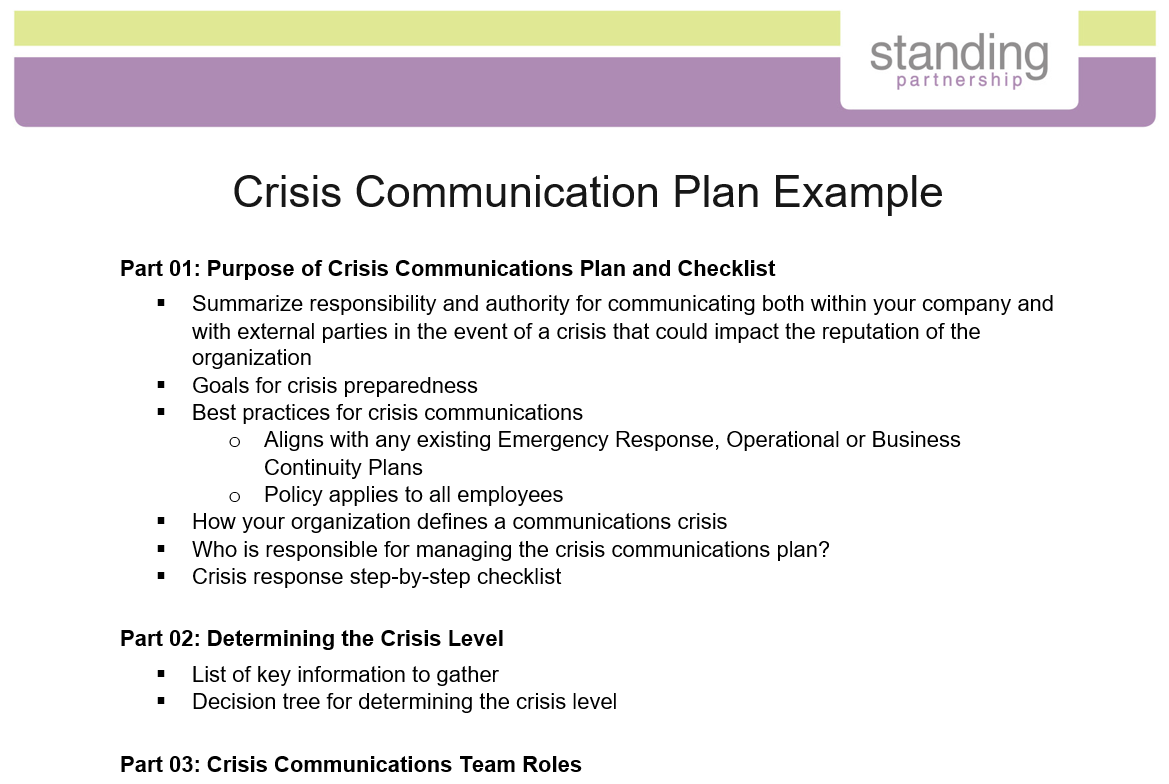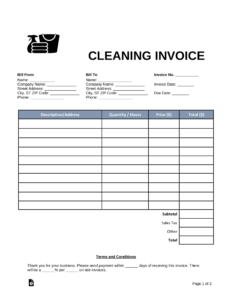In today’s fast-paced and interconnected world, organizations face a multitude of potential crises that can threaten their reputation, operations, and even survival. From natural disasters to product recalls to cybersecurity breaches, crises can strike at any time and in any industry. The key to successfully navigating these challenges lies in having a well-thought-out crisis communication plan. This article will provide you with a comprehensive crisis communication plan template, complete with valuable insights, examples, and case studies.
1. Introduction to Crisis Communication
Before diving into the specifics of a crisis communication plan, it’s important to understand the basics of crisis communication itself. Crisis communication refers to the strategic management of communication during a crisis or emergency situation. Its primary goal is to protect the reputation and credibility of an organization while effectively managing the flow of information to key stakeholders.
A crisis communication plan serves as a roadmap for how an organization will respond to and communicate during a crisis. It outlines roles and responsibilities, communication channels, key messages, and strategies for maintaining transparency and trust with stakeholders. By having a well-defined plan in place, organizations can react quickly and effectively to crises, minimizing their impact and safeguarding their reputation.
2. Importance of a Crisis Communication Plan
Having a crisis communication plan in place is crucial for several reasons:
- Timely response: A crisis can escalate rapidly, and organizations must be prepared to respond swiftly to minimize damage. A well-prepared plan ensures that key decision-makers know their roles and responsibilities, enabling them to take immediate action.
- Consistency: During a crisis, consistent messaging is essential to avoid confusion and misinformation. A crisis communication plan provides predefined key messages and guidelines for communication, ensuring that all stakeholders receive accurate and consistent information.
- Reputation management: Crises have the potential to severely damage an organization’s reputation. A crisis communication plan helps organizations proactively manage their reputation by outlining strategies for addressing negative publicity, maintaining transparency, and rebuilding trust.
- Stakeholder trust: Effective communication during a crisis is crucial for maintaining the trust and confidence of stakeholders, including customers, employees, investors, and the general public. A crisis communication plan enables organizations to address their concerns promptly and transparently.
- Legal and regulatory compliance: Depending on the nature of the crisis, organizations may be subject to legal and regulatory obligations. A crisis communication plan ensures that the organization’s communication efforts are compliant and minimize legal risks.
3. Key Components of a Crisis Communication Plan
A comprehensive crisis communication plan includes the following key components:
3.1 Crisis Management Team
The crisis management team consists of individuals responsible for leading the organization’s response to a crisis. This team should include representatives from various departments, such as public relations, legal, operations, and executive leadership. Each team member should have clearly defined roles and responsibilities, ensuring a coordinated and efficient response.
3.2 Communication Channels
Identifying the appropriate communication channels is essential for effectively reaching stakeholders during a crisis. These channels may include press releases, social media platforms, websites, email lists, and direct communication with key stakeholders. The crisis communication plan should outline which channels will be used for specific types of communication and provide guidelines for their use.
3.3 Key Messages
Key messages are the core statements an organization wants to convey during a crisis. These messages should be developed in advance and reflect the organization’s values, priorities, and commitment to addressing the crisis. The crisis communication plan should include a list of key messages for various scenarios, ensuring consistency and clarity in communication.
3.4 Stakeholder Communication
Identifying and prioritizing key stakeholders is critical in crisis communication. The crisis communication plan should outline the specific communication strategies for each stakeholder group, taking into account their unique needs and concerns. This may include customers, employees, investors, media, government agencies, and the general public.
3.5 Spokesperson(s)
The crisis communication plan should designate one or more spokespeople who will serve as the official voice of the organization during a crisis. These individuals should be media-trained and have a deep understanding of the crisis and the organization’s response. Clear guidelines should be provided to ensure consistent messaging and prevent unauthorized communication.
3.6 Monitoring and Evaluation
Monitoring the effectiveness of crisis communication efforts is crucial for making timely adjustments and improvements. The crisis communication plan should outline methods for monitoring and evaluating the impact of communication activities, such as social media listening, media monitoring, and stakeholder feedback. Regular evaluation allows organizations to identify gaps and areas for improvement.
4. Case Studies: Effective Crisis Communication
Examining real-world examples of effective crisis communication can provide valuable insights into best practices. Let’s explore two case studies that highlight successful crisis communication strategies:
4.1 Johnson & Johnson’s Tylenol Crisis
In 1982, seven people in the Chicago area died after consuming Tylenol capsules laced with cyanide. Johnson & Johnson, the manufacturer of Tylenol, faced a severe crisis that threatened the safety and reputation of its flagship product.
Johnson & Johnson’s crisis communication response was widely praised for its transparency, swift action, and commitment to customer safety. The company immediately recalled 31 million bottles of Tylenol and launched a nationwide media campaign to alert consumers to the potential danger. They worked closely with law enforcement and the FDA to investigate the tampering and introduced tamper-evident packaging to restore consumer trust.
By prioritizing public safety and being transparent throughout the crisis, Johnson & Johnson was able to rebuild trust and maintain its market share. The Tylenol crisis remains a classic example of effective crisis communication.
4.2 Southwest Airlines’ Flight 1380 Emergency Landing
In April 2018, Southwest Airlines Flight 1380 experienced an engine failure that resulted in the death of one passenger and multiple injuries. Southwest Airlines faced a challenging crisis that required swift and empathetic communication.
The airline’s crisis communication team immediately activated their crisis communication plan, providing regular updates and expressing their condolences to the affected passenger’s family. They held a press conference, where the CEO and relevant authorities addressed the incident and outlined the steps being taken to investigate and prevent similar incidents in the future.
Southwest Airlines’ response emphasized their commitment to safety and the well-being of their passengers. By promptly addressing the incident, expressing empathy, and providing transparent updates, Southwest Airlines demonstrated effective crisis communication in the face of a tragic event.
5. FAQ
5.1 What should be included in a crisis communication plan?
A comprehensive crisis communication plan should include the crisis management team, communication channels, key messages, stakeholder communication strategies, designated spokesperson(s), and methods for monitoring and evaluation.
5.2 How often should a crisis communication plan be updated?
A crisis communication plan should be regularly reviewed and updated to ensure its relevance and effectiveness. It is recommended to review and update the plan at least annually, or whenever there are significant changes in the organization’s structure, operations, or industry.
5.3 How can social media be effectively utilized in crisis communication?
Social media can be a powerful tool for crisis communication, allowing organizations to reach a wide audience quickly. To effectively utilize social media, organizations should actively monitor mentions and conversations related to the crisis, respond promptly to inquiries and concerns, and provide regular updates and accurate information. It’s crucial to maintain a calm and empathetic tone and address any misinformation or rumors that may arise.
5.4 What are the common mistakes to avoid in crisis communication?
Some common mistakes to avoid in crisis communication include delayed or inadequate response, lack of transparency, inconsistent messaging, blaming others, and failing to address stakeholders’ concerns. It’s important to have a proactive and open approach, take responsibility, and communicate honestly and transparently throughout the crisis.
5.5 How can organizations rebuild trust after a crisis?
Rebuilding trust after a crisis requires consistent and transparent communication, sincere apologies if necessary, taking corrective actions, and demonstrating a commitment to preventing similar crises in the future. Organizations should also actively engage with stakeholders, address their concerns, and provide regular updates on progress and improvements.
6. Conclusion
A well-prepared crisis communication plan is an essential tool for organizations to effectively navigate and manage crises. By anticipating potential challenges, defining roles and responsibilities, and establishing clear communication strategies, organizations can minimize the impact of crises and protect their reputation. The key takeaways from this article include the importance of timely response, consistency in messaging, reputation management, stakeholder trust, legal compliance, and the key components of a crisis communication plan. By incorporating these insights and learning from case studies, organizations can build resilience and successfully navigate crises when they arise.
7. FAQ After The Conclusion
7.1 How can organizations prepare for crises they may not anticipate?
While it may be challenging to anticipate every possible crisis, organizations can still prepare by conducting risk assessments and scenario planning. By identifying potential risks and developing response strategies in advance, organizations can be better prepared to handle unforeseen crises.
7.2 What role doesthe media play in crisis communication?
The media plays a crucial role in crisis communication as it serves as the primary channel for disseminating information to the public. During a crisis, the media can greatly influence public opinion and perception of an organization. It is important for organizations to proactively engage with the media, provide accurate and timely information, and maintain open lines of communication. Building strong relationships with the media before a crisis occurs can also help in managing the flow of information and ensuring accurate reporting.
7.3 How can organizations effectively train their crisis management team?
Effective training is essential for the crisis management team to be prepared and capable of responding to crises. Organizations can provide training through workshops, simulations, and role-playing exercises. These training sessions should cover various crisis scenarios, communication protocols, decision-making processes, and media relations. It is also important to regularly update the training to reflect new challenges and lessons learned from real-world crises.
7.4 What are some common challenges organizations face in crisis communication?
Some common challenges organizations face in crisis communication include managing the speed and volume of information, addressing rumors and misinformation, coordinating communication across various departments and stakeholders, maintaining transparency while protecting confidential information, and dealing with emotional and sensitive issues. It is essential to be prepared for these challenges and have strategies in place to overcome them.
7.5 How can organizations assess the effectiveness of their crisis communication plan?
Organizations can assess the effectiveness of their crisis communication plan through various methods, such as conducting post-crisis evaluations, gathering feedback from stakeholders, monitoring media coverage and social media sentiment, and analyzing key metrics, such as response time, message reach, and stakeholder satisfaction. These evaluations provide valuable insights into areas that need improvement and help organizations refine their crisis communication strategies.
8. Summary
A crisis communication plan is a vital tool for organizations to effectively respond to and manage crises. It ensures timely response, consistency in messaging, reputation management, stakeholder trust, and legal compliance. By incorporating key components such as a crisis management team, communication channels, key messages, stakeholder communication strategies, designated spokesperson(s), and monitoring and evaluation methods, organizations can navigate crises with confidence. Real-world case studies, like Johnson & Johnson’s Tylenol crisis and Southwest Airlines’ Flight 1380 emergency landing, provide valuable insights into effective crisis communication strategies. By learning from these examples and following best practices, organizations can build resilience and protect their reputation when faced with unexpected challenges.





